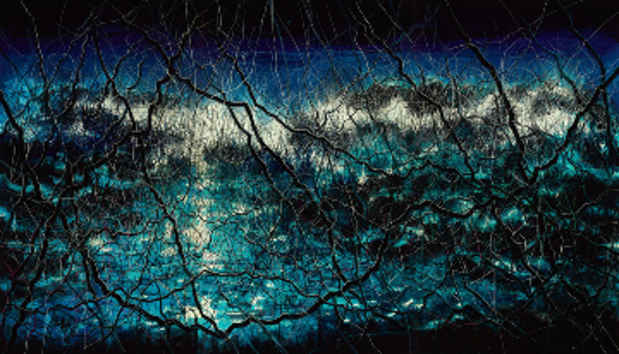Zeng Fanzhi “Paintings, Drawings, and Two Sculptures”
Gagosian Gallery 24th Street

This event has ended.
Gagosian New York presents paintings, sculpture, and works on paper by Zeng Fanzhi. This is his first exhibition with the gallery in New York, following major exhibitions at Gagosian Hong Kong (2011) and Gagosian London (2012).
Zeng is at the forefront of a generation of Chinese artists who have achieved national and international prominence in the wake of the Cultural Revolution of the 1970s. Over the past three decades he has probed the place of the unconscious in the construction of human experience while reflecting on the collective national psyche in the face of broad and accelerated change. In his formative years, he was particularly inspired by the works of German Expressionism and French Romanticism, in which he found precedents for exploring the psychology of selfhood in the throes of societal flux. His searing Hospital Triptych No. 1 (1991), an early example of his virtuosic application of historical styles and techniques to interpret contemporary national realities, was shown in the pivotal exhibition “China’s New Art, Post-1989” at the Hong Kong Arts Center in 1993.
With time, Zeng has tempered the direct impact of Western Expressionism with the local influence of traditional guohua painting methods. His eloquent and confrontational work is charged with melancholy, unfolding in a succession of dystopic themes, both introspective and overtly socially critical. After the nightmarish Hospital paintings came the visceral Meat paintings that juxtapose figures with butchered flesh; then the enigmatic Mask paintings that treated social alienation; and the densely skeined landscapes with their obscured figures, alluding to the Taoist perception of human transience within nature’s boundless permanence. With the painting From 1830 till now No. 4 (2014), exhibited at the Musée du Louvre last year, Zeng depicts Eugene Delacroix’s Liberty Leading the People (1830) as a neglected stone monument in an overgrown thicket.
Recent paintings include large-scale nocturnal landscapes, some populated by anonymous figures or identifiable historical subjects; and smaller, more abstract canvases in which schematic black branches stand out in sharp relief against backgrounds of sweeping horizontal brushstrokes. In the landscape paintings, traditional techniques blend seamlessly with modern abstraction: in an idiosyncratic method originally adopted out of necessity due to injury, Zeng sometimes works with multiple brushes in each hand, undermining his own precision through a process that has become a continuous cycle of creation and destruction. The “abstract landscape” paintings evolve as if autonomously through the rhythmic processual vitality with which Zeng approaches his persistent motifs. Invoking a lineage beginning with Song Dynasty depictions of idyllic, imaginary vistas rendered in calligraphic strokes, he envisages vast scenes of bleak terrains spontaneously lit with bright pinks and blues, and eclipsed by jagged black branches, graphic in their concise and sinister silhouettes.
In the cast metal sculptures, the tree, a symbol of growth and aspiration, is reduced to the melancholic figure of a single gnarled and wintry limb. For the first time, Zeng will show related mixed-media drawings, developed over many years.
Other paintings juxtapose carefully adapted art-historical subjects with spontaneous brushwork, oscillating between a meticulous cut-and-paste sensibility and gestural mark-making. An exacting close-up of Laocoön’s head—an homage to the classical Western depiction of agonizing ordeal—is cast against a mercurial, nebulous sky; while a Nativity scene is partially obscured by yellow paint drips against a dark landscape. Depicting Greco-Roman and Christian subjects and motifs within fields that merge restrained traditional Chinese techniques with the unleashed energies of action painting, Zeng has forged a poignant, potent, and topical expressionism that reaches across culture and history.
Media
Schedule
from November 06, 2015 to December 23, 2015
Opening Reception on 2015-11-06 from 18:00 to 20:00